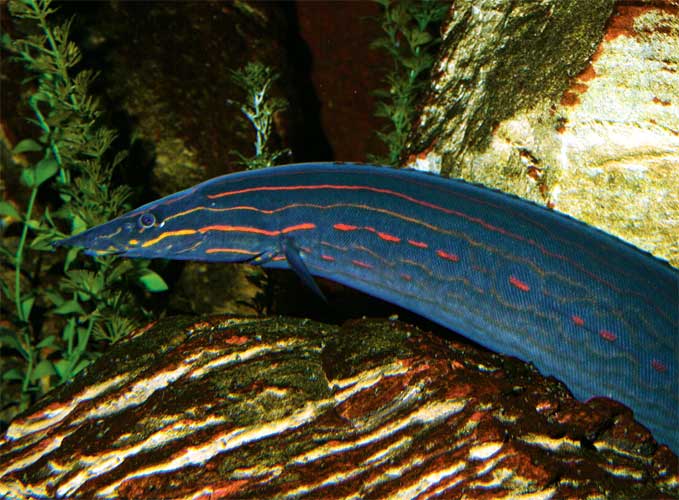
Mastacembelus erythrotaenia
FAMILY
Mastacembelidae
TAXONOMY
Mastacembelus argus Bleeker, 1850, Moluccan Archipelago.
OTHER COMMON NAMES
German: Feueraal; Vietnamese: Cб chachlua.
PHYSICAL CHARACTERISTICS
Grows to 39.4 in (100 cm). Soft-rayed portions of the median
fins and pectoral fin have a sharply defined white distal margin.
The basal portion of the dorsal, anal, and caudal fins is dark
and that of the pectoral fin is dark or has broad vertical bars.
Head and anterior part of the body have longitudinal red and
black bands; the rest of the body has red spots or elongated
marks on a black background.
DISTRIBUTION
In Asia, from Thailand and Cambodia to Indonesia.
HABITAT
A large lowland floodplain species occurring in slow-moving
rivers and inundated plains. Also found in streams and lakes.
BEHAVIOR
Under aquarium conditions individuals tend to spend daylight
hours in a preferred shelter spot.
FEEDING ECOLOGY AND DIET
Feeds on benthic insect larvae, worms, and some plant material.
Under aquarium conditions, specimens larger than 12 in
(30 cm) in total length become predatory, hunting and eating
smaller fishes. Vulnerable to larger fish, water snakes, crocodilians,
and fish-eating birds as well as fishermen.
REPRODUCTIVE BIOLOGY
Nothing is know of the
REPRODUCTIVE BIOLOGY
of this species.
Other mastacembelids are egg scatterers, depositing a few eggs
at a time in fine-leafed aquatic plants.
CONSERVATION STATUS
Not listed by the IUCN. This species has become rare in recent
years due to human consumption and overfishing.
SIGNIFICANCE TO HUMANS
Often seen in the aquarium trade. Bred in fish farms in
Bangkok.
Other popular Animals
Photo Gallery of - Fire eel

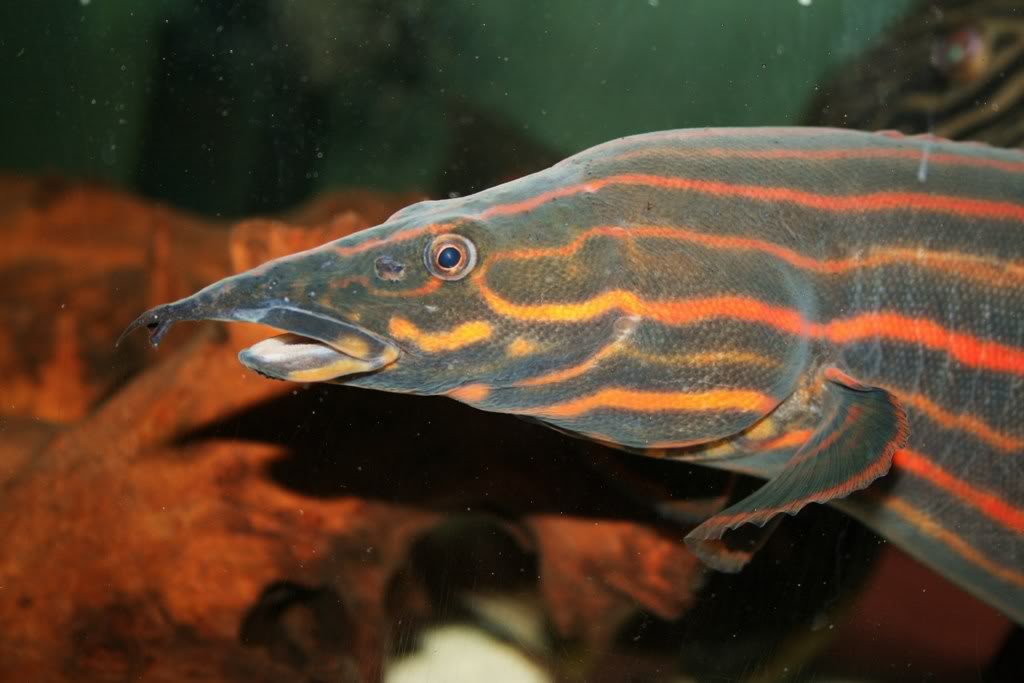
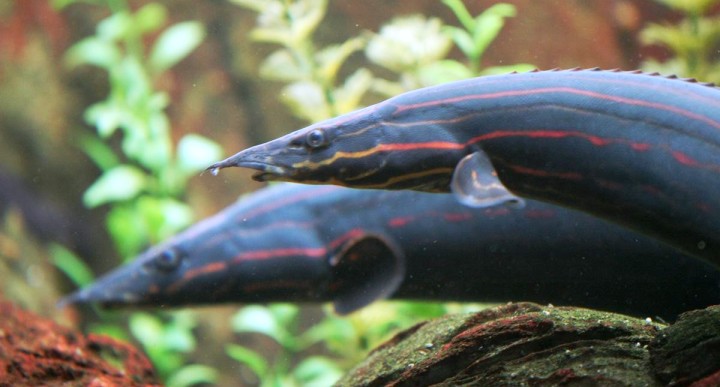
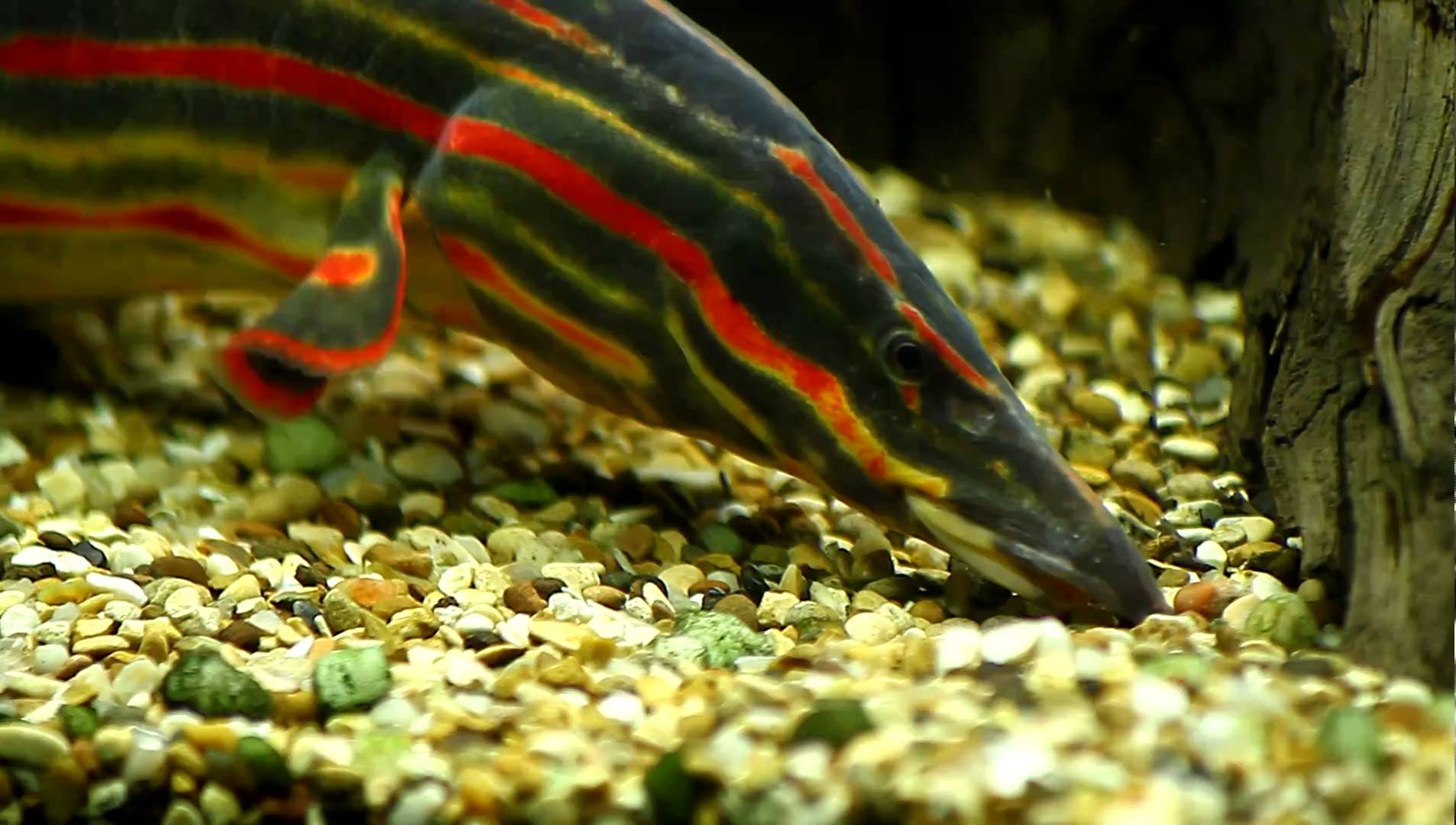
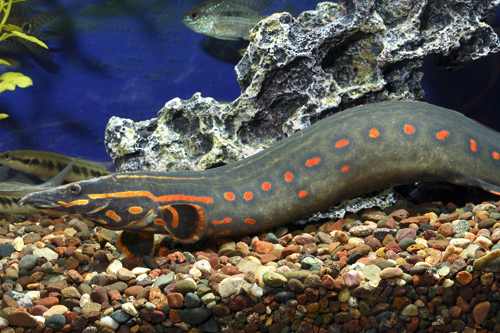
 Animalia Life
Animalia Life